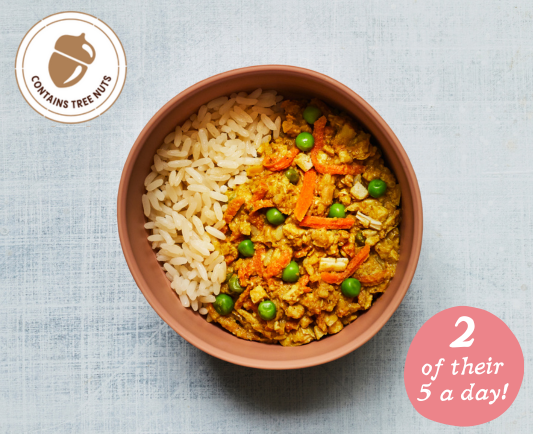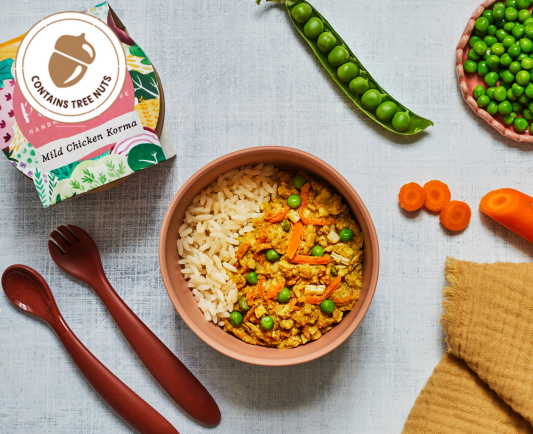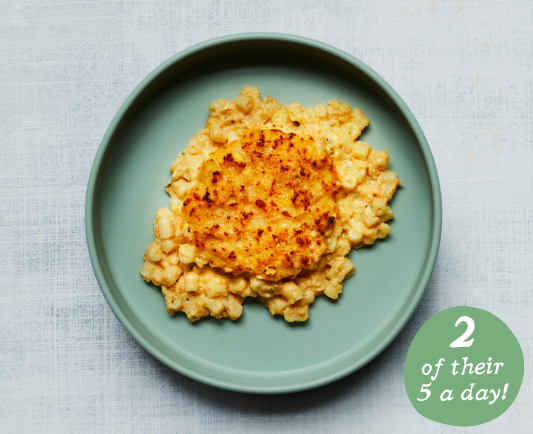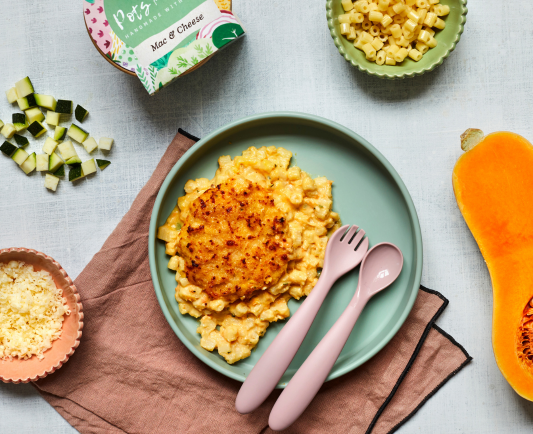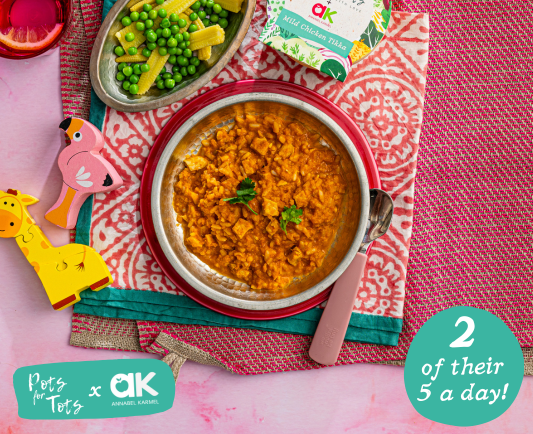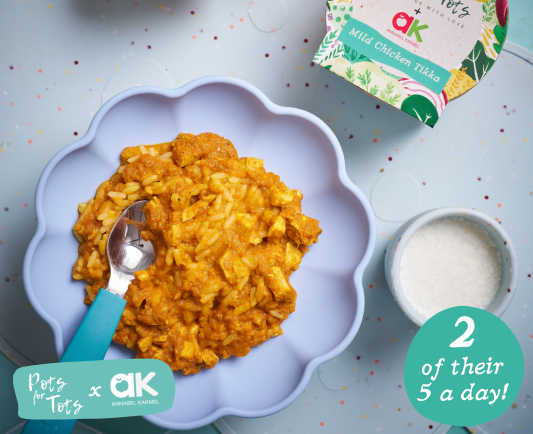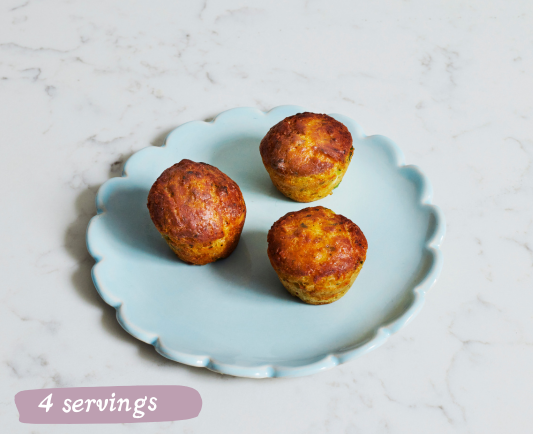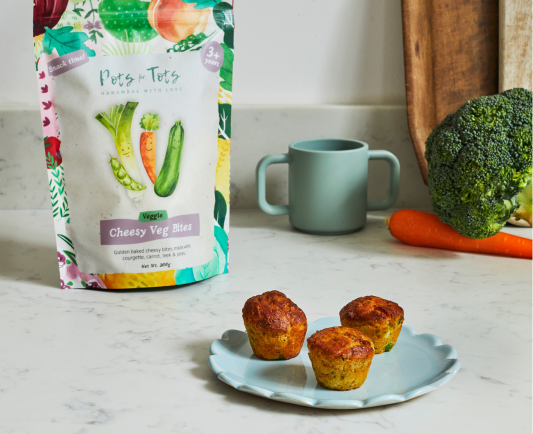PARENTS WITH PICKY EATERS, YOU'RE NOT ALONE!
More than half of all parents have problems with getting their children to eat certain foods, but don’t despair! It won’t last forever and children’s taste buds change rapidly, so keep introducing them to new flavours.
Although it is frustrating, remember that how you react to the situation will impact your child’s eating habits, so even if you’re at the end of your tether, remain calm. Every child is different and every parent has different experiences.
Pots for Tots founder, Flora, offers some advice for parents with picky eaters, with ten tips and tricks for feeding fussy toddlers. As well as some advice from the NHS, she has included things she has found useful with her own son, Toby.
1. Introduce them to as many foods as possible from a young age
Introduce lots of flavours and textures really early on, before they become too opinionated on what they do or do not like. Variety is key! Don’t just give them pasta and fish fingers because it’s easy, branch out and be experimental.
 (Fun food ideas: Fishcake with cucumber eyes, ears & smiley face)
(Fun food ideas: Fishcake with cucumber eyes, ears & smiley face)
2. Make food fun
Turn the food into an airplane or a choo-choo train to keep their attention, or make fruit and vegetables into shapes. This could be putting smiley faces on fish pies or cutting vegetables into stars or hearts using cookie cutters.
You can also make them interact with the colours of the food, such as laying them out like a rainbow or asking them what different colours they have on their plate. Be creative!
3. Get them involved with food prep
Take them to the supermarket and let them pick out their favourite fruit and vegetables. Or get them to help you cook, or at least get involved with the process.
This might be stirring a sauce or even just smelling or tasting it to help you decide when it’s ready. Being part of the process might make them more curious to try it!

(Two kids mixing and seasoning a salad together)
4. Hide the veg
If you know your toddler is particularly fussy about eating vegetables, then why not hide them in their meals.
If you’re making a bolognese for example, you can add as many vegetables as possible, by cutting or blending them into tiny pieces. Carrots, mushrooms, celery and onions might not be foods your toddler would normally eat, but hidden in a bolognese or pasta sauce they may never know.
Another good one is to put a layer of spinach into a lasagne. It’s called a superfood for a reason; it’s full of iron, Vitamin C and fibre - think of all the benefits!
5. Serve it with a sauce
Condiments and toppings such as cheese, pesto and hummus can help entice your toddler to take their first mouthful, whether it’s a snack or a meal.
Dip a raw carrot into hummus or sprinkle cheese on top of a fish pie and it could be the driving force to get them going.

(Carrot and cucumber sticks dipped in hummus)
6. Put the meal into a food they already like
If there’s a particular flavour or food they haven’t tried before, why not put the whole dish into something you know they already like, such as a pitta bread, an omlette or a wrap.
Make them feel confident & comfortable. This way you can introduce them to a new meal without all the fuss.
7. Use phrases to incentivise them
Tell them ‘you’ll be big and strong like mummy and daddy if you finish what’s on your plate’.
You can also use fun catch phrases like ‘carrots will make you see in the dark’, ‘runner beans will make you run really fast’ and ‘milk makes your bones grow stronger’ (that one’s true, actually).

(Little boy with his arms up to show his muscles)
8. Reward them
If your child needs a little bit more encouragement then you could always reward your child by making a kitchen star chart, and giving them a star every time they try a new food, or every time they finish what’s on their plate.
Once they have enough stars you could reward them with a prize, something you know would be a good incentive for them.
9. Positive affirmation
Eat a mouthful of their food and tell them how delicious it is, make ‘yummy’ noises.
Be careful not to force feed them though as it will put them off. You can always let them down from the table and try again later (sometimes, like any other normal human being, they’re just not hungry).
For more advice on this, visit the NHS website.

If your friends have children who eat everything, don’t resent it, use it to your advantage and invite them over for a meal.
Children love to copy each other, and they always want what other children have, so it’s a great way to get them eating a new meal.
-------
If you are really struggling to know what to cook, lack time or energy, or have lost motivation to keep cooking meals that your child doesn’t eat then why not give our Pots for Tots meals a go.
They are all homemade and healthy, and stuffed full of veg and free-range, organic meat from the local butcher. It’s worth a try :)

